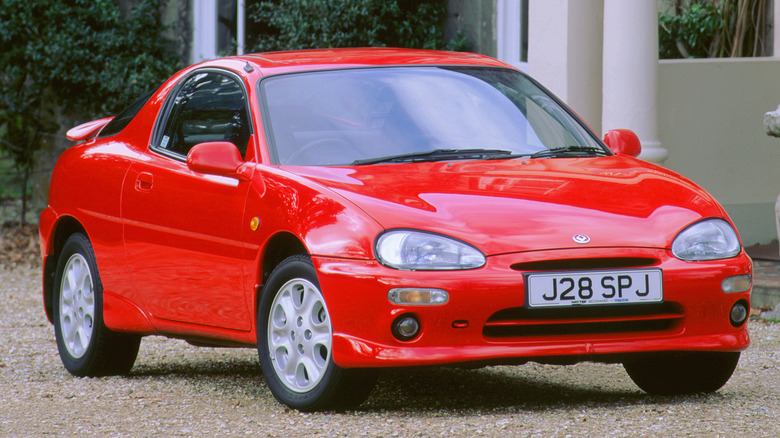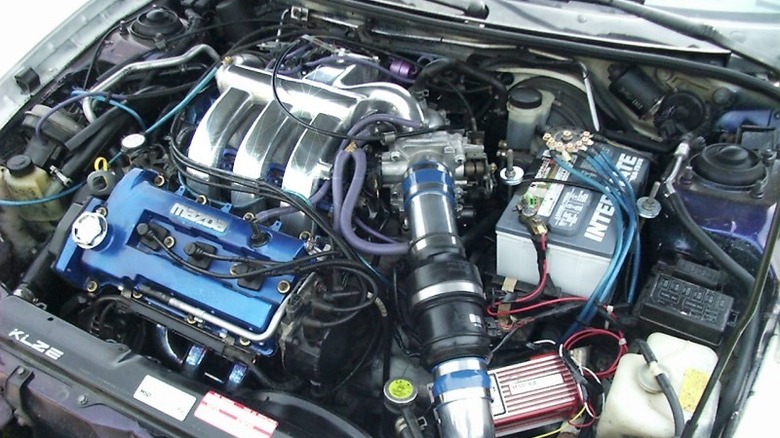Here's What Made Mazda's K-Series Engine So Special
Rather than burying the lede, we'll tell you straight away: Mazda's K-series engines are so special because they're among the smallest V6 engines in the world and simultaneously built like an army tank. The original K-series engine, the K8, displaced only 1.8 liters. Why so small? In the late 1980s, Mazda needed something other than a typical 4-cylinder for its budding premium car brand, Eunos. At the same time, Mazda sought to avoid Japanese taxes that were levied on drivers who owned cars with engines larger than 2,000 cubic centimeters (2.0 liters).
The first – and only – car in the North American market to feature the tiny K8 V6 was Mazda's MX-3 coupe from 1992 to 1998. In the MX-3, the optional K-series V6 engine produced 130 horsepower and 115 pound-feet of torque, which might not seem like a lot, but the MX-3 was a light car. The model could scoot from zero to 60 mph in 8.2 seconds, a very respectable number for the time period. The MX-3 had the distinction of the smallest mass-produced 6-cylinder engine sold in the United States, although Mitsubishi offered a 1.6 liter V6 in Japan.
The K-series engine grew larger over time
At the time of the K-series development, the Japanese economy was on top of the world (though not for much longer). As such, automakers were willing to experiment and forge technological advances. This era brought us such machines as the Acura NSX and Lexus LS400, but the wealth trickled down to Mazda's diminutive V6, too. The K8 engine featured a heavily reinforced aluminum block with four-bolt main bearing caps, as well as aluminum heads. The internals such as the crankshaft and connecting rods were all forged steel for high strength. The official redline of the K8 was 7,000 rpm with a rev limiter kicking in at 7,500 rpm, but many petrolheads viewed those figures as conservative, with the potential for even more revs.
Besides offering race car-like durability, the wee V6 also showcased Mazda's Variable Resonance Induction System (VRIS), which consisted of dual resonance tubes that used valves to effectively vary the tube length based on engine speed. What VRIS did was make more torque available across the entire RPM range as opposed to just at peak (read: high) rpm, which enhanced street driving characteristics. Today, similar technology is commonplace, but Mazda pioneered it in the K8.
Later in its life cycle, the K-series mills would grow to 2.0 liters, then 2.5 liters displacement. The 2.5-liter version enjoyed wider North American exposure as an optional powerplant in Mazda's MX-6 coupe and the ill-fated Ford Probe, in both instances producing around 165 horsepower. Sadly, Mazda's premium Eunos brand failed to catch on and was subsequently killed off in 1996, but leaves a lasting legacy in the small-but-mighty K-series V6.
[Featured image by Jgosteli via Wikimedia Commons | Cropped and scaled | Public Domain]

